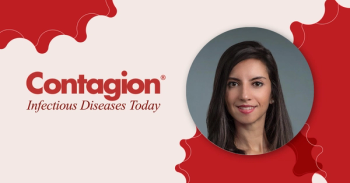
Top Infectious Disease News of the Week—May 12, 2019
Stay up-to-date on the latest infectious disease news by checking out our top 5 articles of the week.
#5: New Deal Makes PrEP Accessible for the Uninsured—But Will It Help?: Public Health Watch
These days, when a government official takes to Twitter, the world spins off its axis.
Or at least it seems that way.
However, a
According to Azar, the drug supplies will be earmarked for those “who are at risk for HIV and who are uninsured,” particularly those residing in states and regions identified as “priority areas” as part of President Donald Trump’s plan (and goal) to end the epidemic in the US, as
Read about
#4: Are Certain Clinical Characteristics Associated with Severe C Diff Infections?
The US Centers for Disease Control and Prevention has classified Clostridium difficile (C diff) infections as an urgent threat to public health, yet it can be difficult for clinicians to classify the severity of infection. Similarly, lack of data leaves gaps in knowledge about if a correlation exists between severity, C diff treatment, and clinical outcomes.
In order to determine characteristics that can be used to classify C diff disease severity, a team of investigators from the University of Mississippi and University of Cincinnati collaborated on a study. The findings of their research, which set out to determine differences in the clinical characteristics between complicated and uncomplicated C diff infections were presented in a poster session at the Making a Difference in Infectious Diseases 2019 (
In an exclusive interview at the meeting, Contagion® spoke with the poster presenter, Jaime Wagner, PharmD, a clinical assistant professor in the Department of Pharmacy Practice at the University of Mississippi, about the research (see video).
Read about
#3: NIAID to Give $41.6 Million in Funding for Development of STI Vaccines
With an increase in the rate of reported sexually transmitted infections (STIs) in the United States, the National Institutes of Health’s (NIH) National Institute of Allergy and Infectious Diseases (NIAID) has announced a program of more than $41 million dollars to fund research into vaccines for syphilis, gonorrhea, and chlamydia.
The recent NIAID
“It’s multifactorial. Certainly we are better at diagnosis as well as surveillance, so the real increase that we’re seeing is probably that we’re picking up more cases, but there are probably some other factors,” explained Fauci, noting that the increase in STIs may be linked to the opioid epidemic as well as an increase in unprotected sex, suboptimal sexual health education, and the use of PrEP to prevent HIV resulting in more sex without condoms.
Read more about
#2: Ryan K. Shields, PharmD, MS: T2Candida's Place in Rational Antifungal Management
Segment Description: Ryan K. Shields, PharmD, MS, associate professor of medicine at the University of Pittsburgh and Contagion®'s Multidrug-Resistant Infections Section Editor, discusses his research presented at
Interview transcript (modified slightly for readability):
Ryan K. Shields, PharmD, MS: This year at MAD-ID 2019 I presented research on behalf of a larger team about our ways we’ve incorporated T2Candida into diagnostic management in our medical ICU. T2Candida is a new diagnostic test that’s really important because it detects candida directly from whole blood samples within 3 to 5 hours. Comparatively, it takes 2 to 3 days to diagnose candidemia in blood cultures, which we know delays antifungal therapy for patients. So we view T2 as a way to find patients with candidiasis where we can initiate earlier antifungals and we hope to be able to improve their outcomes with that.
Watch the
#1: Is Antibiotic Development Now the Road Less Traveled?
Although attention has been focused on the use of
Recent attention has been focused on the bankruptcy of the biotech company Achaogen. It’s likely you haven’t even heard of them, let alone know that they filed for bankruptcy a few weeks ago. The reason this bankruptcy is worrisome is that Achaogen’s antibiotic, plazomicin, was actually
Read about
Newsletter
Stay ahead of emerging infectious disease threats with expert insights and breaking research. Subscribe now to get updates delivered straight to your inbox.




















































































































































































































































































